Planting Date for Soybeans
Feb 02, 2020
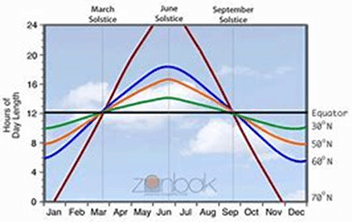
Planting Date for Soybeans by Jeff Hammer
Planting date is something that is continually researched and debated in Agronomy. Planting dates historically were set based on environmental factors conducive to quick emergence for all crops. Most of the established criteria were set years ago and intensively researched and gave a good foundation of measure for the optimum planting dates. This research was performed largely before seed treatment advancements which have allowed seeds to withstand environmental stresses that occur during less than ideal planting situations. Soybeans have always had a soil temperature recommendation of 55-60 degrees before seeding should be performed. The issue with this is under no-till and heavy residue those temperatures may not be reached till well into May some years. Recent research in soybean planting dates has been intense to understand the impacts of earlier planting. The one constant with the indeterminate growth type of beans (meaning they go through vegetative growth and reproductive stages at the same time) is that the earlier we can make them flower, the more potential for yield we create. BASF has funded much of this research over the past several years with some impressive results.
Replications over a two year period delivered virtually identical results.
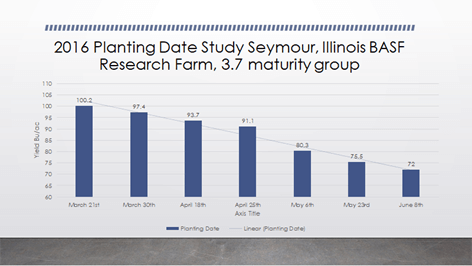
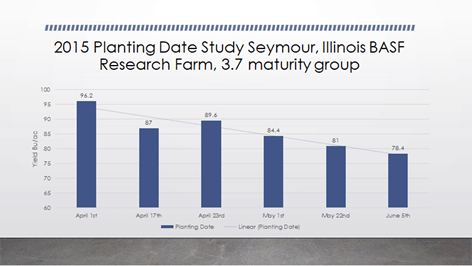
The optimum time for flowering in beans has bee determined to be by the summer solstice or the longest day of the year. This maximizes the amount of solar radiation that can be captured enhancing more flowering potential. An interesting observation on our farm has been by planting earlier we alter the growth creating a shorter plant with more closely stacked nodes. The biggest affect found from this is the days spent in full flowering stages with nearly a 2X increase in number of days flowering in the earlier planting. All the other growth stages were similar with flowering days being the major change.

The number one concern from early planting is loss of stand due to emergence stress. This is a viable concern but early planting essentially eliminates final stand being an impact on yield. Early planting repetitively created a situation where the highest yields came from the lowest stands. Even spacing of stand is still important for maximizing yield, but number of plants necessary was essentially a non- factor.
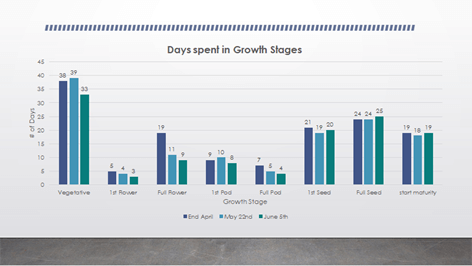
I feel like many years there is an opportunity to enhance our optimum harvest window by planting beans early, giving us a greater chance to achieve better harvest moistures by spreading out our harvest window.
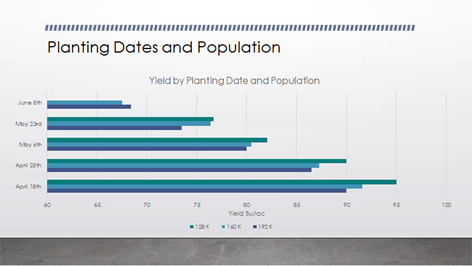
*Charts and data results of research by BASF from Seymour Illinois (2015-2016).